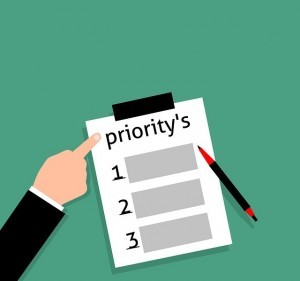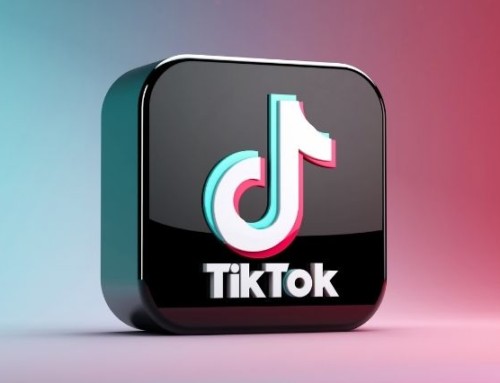Social media has been one of the most powerful tools for small business owners during the pandemic. Unable to see clients in person, small business marketers have relied heavily on social media to communicate with prospects and clients alike, as well as fellow business owners, vendors, and industry experts. While social media is most effective when used to facilitate a conversation with your audience, it still requires a little planning to get the most out of it. Here is how to plan your social media messaging for the best results.
Decide on which social media platforms you want to use
 It can be overwhelming to small business marketers how many social media platforms there are, how to use them, and deciding which ones are best to use to reach your target audience. If your small business is new to social media, you may want to start with one or two platforms until you understand your audience and what messaging resonates with them. Ideally, you want to be on platforms where your prospects are likely to be. These choices may include:
It can be overwhelming to small business marketers how many social media platforms there are, how to use them, and deciding which ones are best to use to reach your target audience. If your small business is new to social media, you may want to start with one or two platforms until you understand your audience and what messaging resonates with them. Ideally, you want to be on platforms where your prospects are likely to be. These choices may include:
There are several other platforms as well, so take the time to research where your audience is. LinkedIn, for example, leans more towards business to business marketing while Facebook can be business to consumer or business to business. You can do a bit of research to see where your audience resides, or ask a small business marketing consultant to help you find the ideal platforms to be on.
Think about what you are looking to accomplish with each platform
 Regardless of which social media platforms you choose, think about what you are trying to accomplish with your messaging. Are you trying to get the phone to ring? Get more visits to your website? Directly sell products straight from the platform? Set up appointments? Start making a list of what you think you want to do, your priorities and what you want to accomplish. Depending on what the goal is, you may want to note what link you will include in your post to direct people to the action you want them to take.
Regardless of which social media platforms you choose, think about what you are trying to accomplish with your messaging. Are you trying to get the phone to ring? Get more visits to your website? Directly sell products straight from the platform? Set up appointments? Start making a list of what you think you want to do, your priorities and what you want to accomplish. Depending on what the goal is, you may want to note what link you will include in your post to direct people to the action you want them to take.
How often are you going to post?
Ask five marketers how often to post by platform, and you will get five different answers. It really depends on your audience, and the only way to truly figure out what works for your audience is by trial and error. You can start with a basic “standard” schedule, but plan to tweak it based on the kind of engagement you are getting. Here is a suggested plan by platform to start:
Facebook: 2 -3x/week
LinkedIn: 2-3x/week
Instagram: 2x/week
Twitter: 7 days a week, 5-7x/day
Find a social media marketing tool to help manage your accounts
 While you can definitely post directly to each platform individually, many social media tools will allow you to manage multiple social media accounts from one platform. Here are the most popular ones for small business owners:
While you can definitely post directly to each platform individually, many social media tools will allow you to manage multiple social media accounts from one platform. Here are the most popular ones for small business owners:
- Hootsuite
- Buffer
- Sprout Social
- Sendible
- Social Pilot
Many have a free or low-cost version of their platform. The more features you want, the more the platform costs but understand that these platforms can offer a central place to manage your platforms, including posting, comments, mentions, and reporting. It is worth checking them out.
Create a social media calendar
Now that you have the basics in place, it is time to create a social media calendar. Similar to a content calendar, a social media calendar helps you plan:
- What day you post
- What time you post
- Post content
- Post link
- Target messaging
- Who is creating the content?
There are all kinds of social media content calendars out there. We happen to like HubSpot’s social media calendar template. It is extremely easy to use and easy to update if things change internally, and you need to update your messaging quickly. Why use a social media calendar? Consistent messaging is crucial for social media success. Creating even a basic outline of your social media messaging for the next 30, 60, or 90 days will keep your marketing on track and give you better results. One of the benefits of using a social media content calendar is the ability to visualize your social content strategy over a period of time and stay organized across all social channels. It helps you plan your social media marketing efforts around important opportunities in your industry or company. Using a social media content calendar allows you to develop a unified voice and create a consistent flow of content. You will be able to look across all your marketing efforts and make informed decisions about the timing of your social posts. While it is a bit more work on the front end, a social media calendar will ultimately save you time and headaches.
Planning your social media messaging is a smart move to capture the attention of your target audience and keep them engaged. Using a basic calendar and an effective social media management platform will enhance your marketing efforts overall.
- Marketing Tactics That Your Small Business Can Do for Free - January 10, 2024
- How to Create Images for Your Small Business Website - December 6, 2023
- How Small Businesses Benefit from Referrals - November 6, 2023





